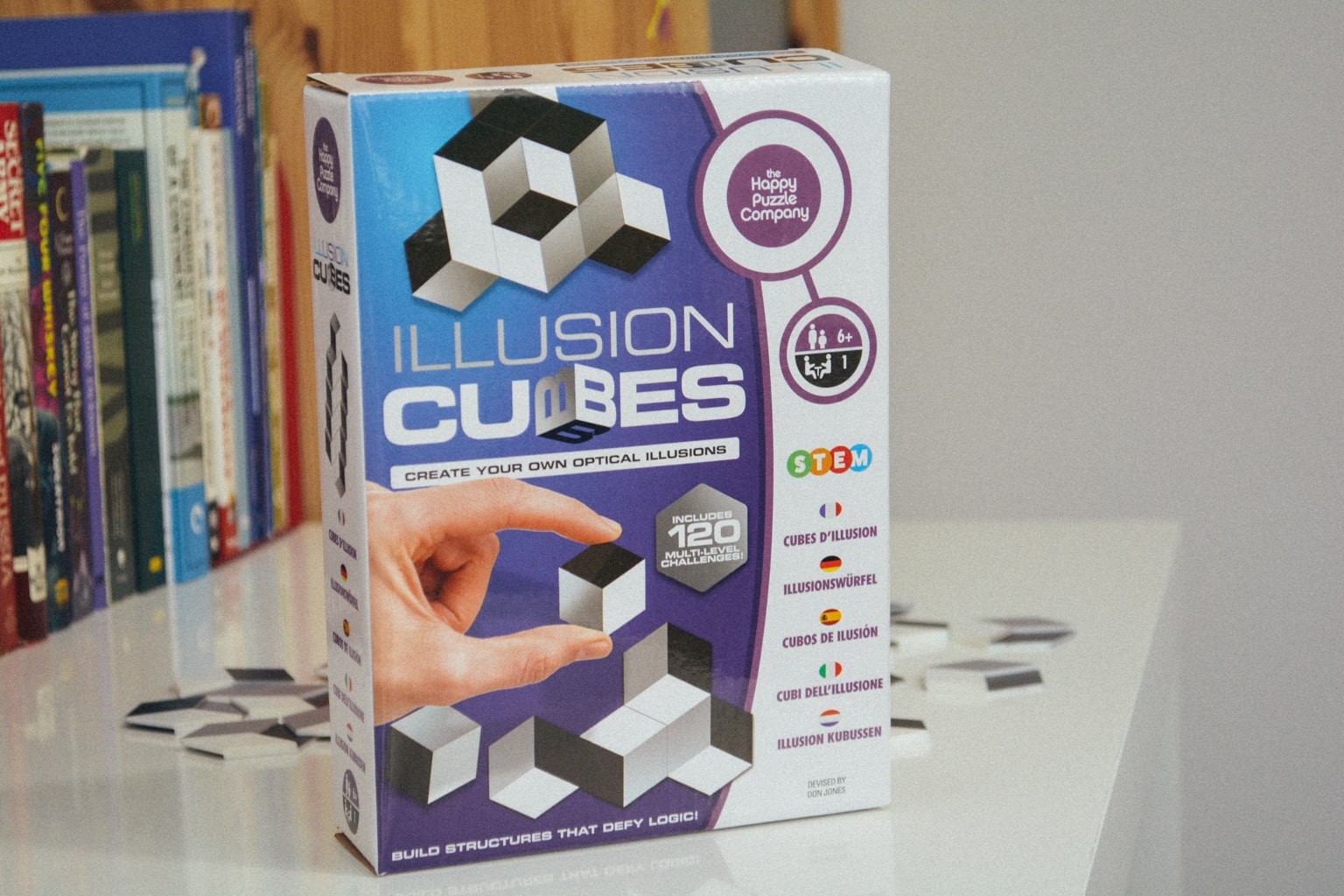
Aveline likes to circle wishlist items in the Timberdoodle catalog (seriously; who needs Toys R Us?) She’s a mathy kid with an artistic twist — a fan of tessellations, logic puzzles, intricate geometric art, and Mondrian’s blocky masterpieces — so Illusion Cubes immediately intrigued her.
[Disclosure of Material Connections: I received a complimentary Illusion Cubes game from Timberdoodle in exchange for writing and publishing this post. All opinions — and photographs! ;) — are my own, and I was not required to write a positive review.]
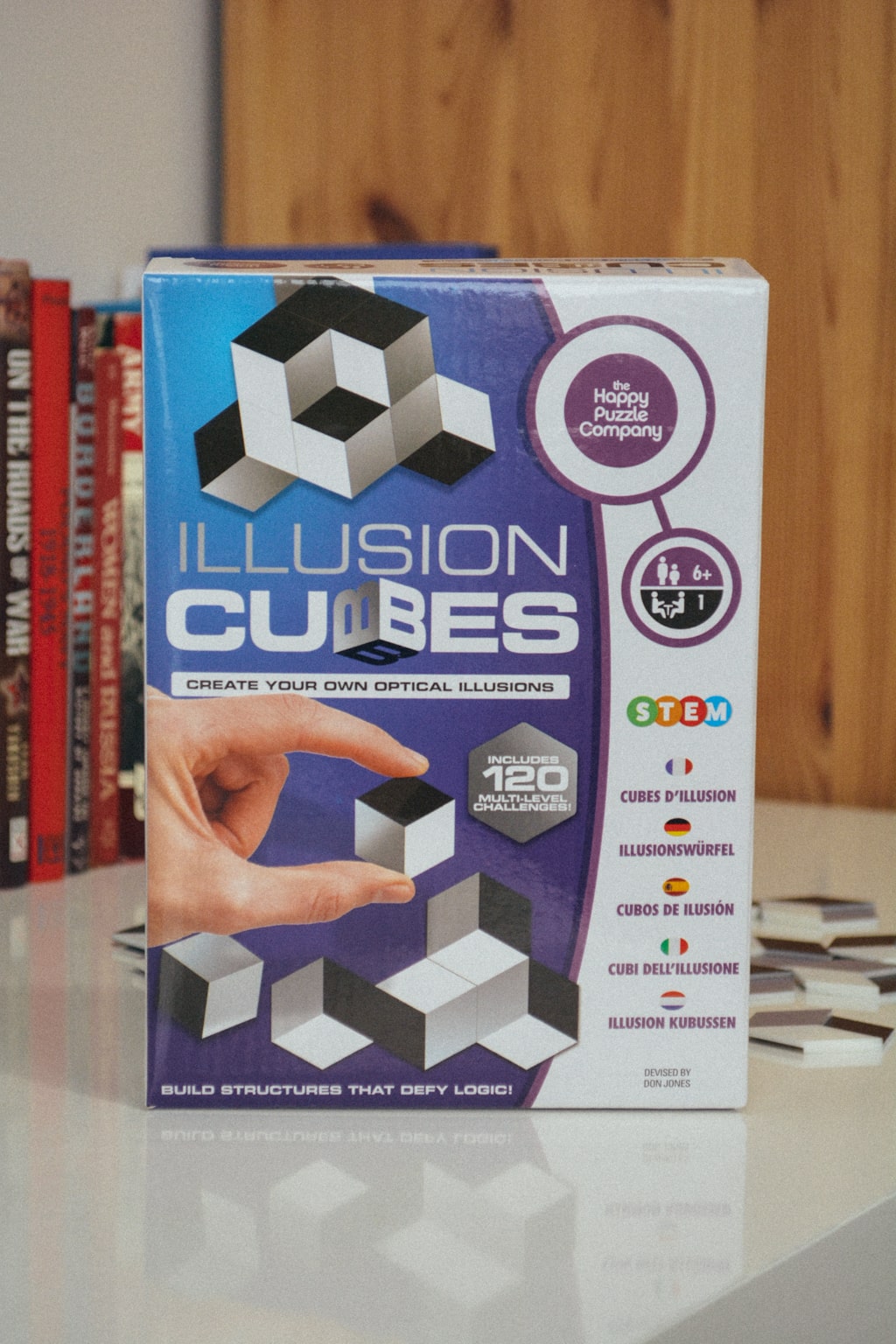
What ages is Illusion Cubes intended for?
Illusion Cubes is a relatively new puzzle in the analog gaming world. The product launched in 2020, and is currently featured in Timberdoodle’s 10th Grade Curriculum kit.
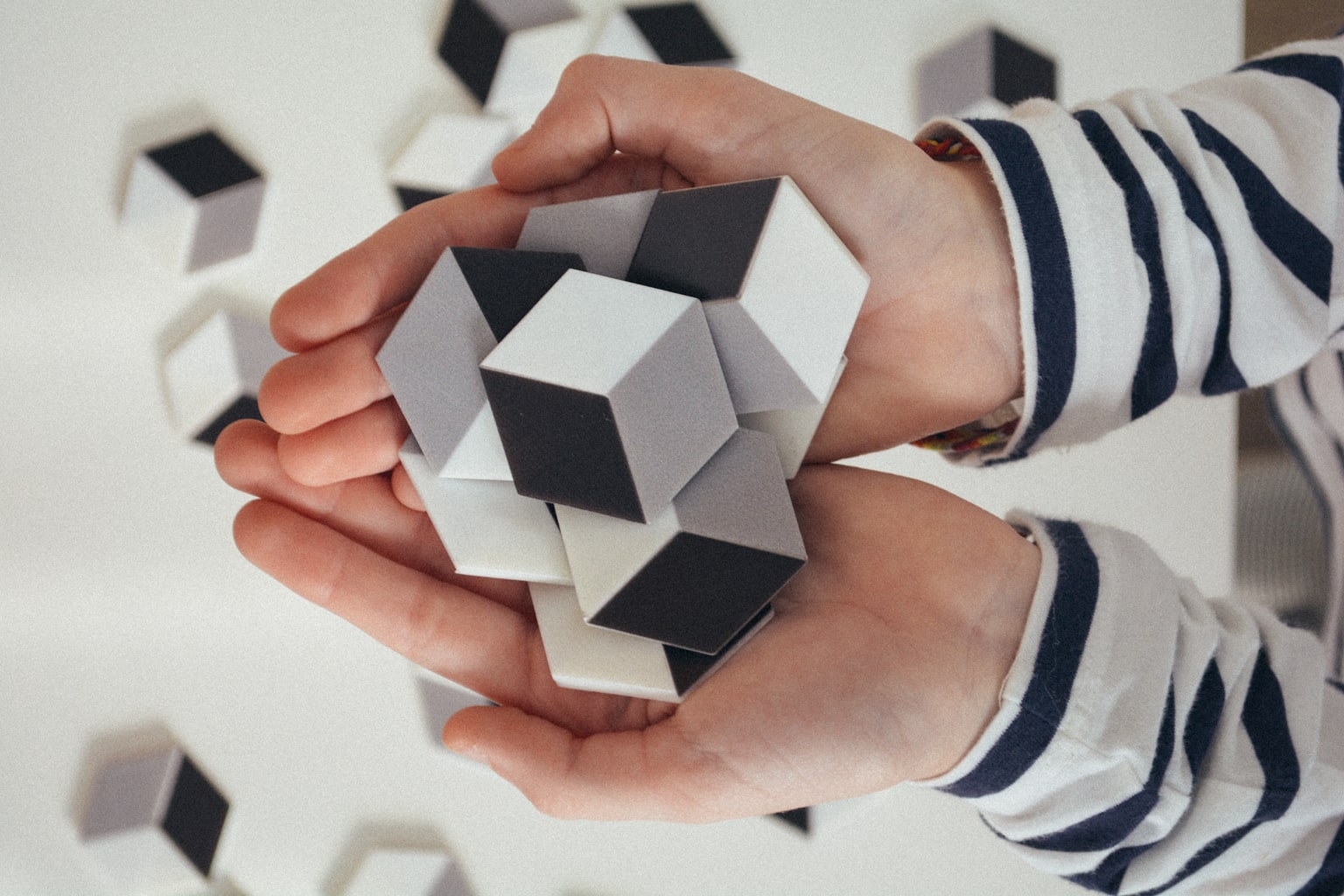
Like most single-player logic games, it’s designed for a wide range of ages; the manufacturer suggests it for ages six through adult. My twelve-year-old and I tested this game together.

What’s included in Illusion Cubes?
One thing which surprised us right away when we opened Illusion Cubes? The tiles are aren’t completely flat! The offset section allows each tile to easily nest with other tiles, making it easier to create the illusions.
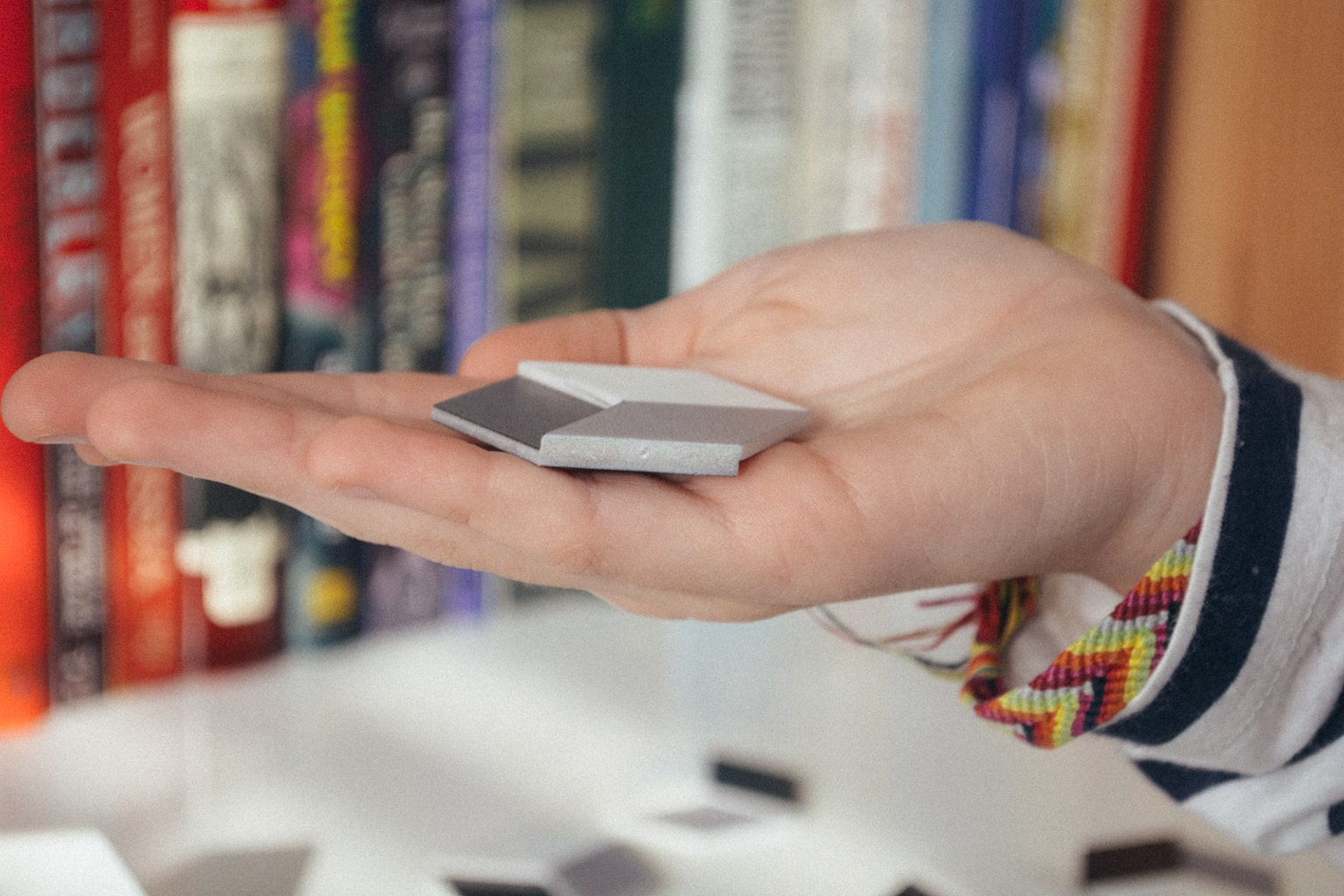
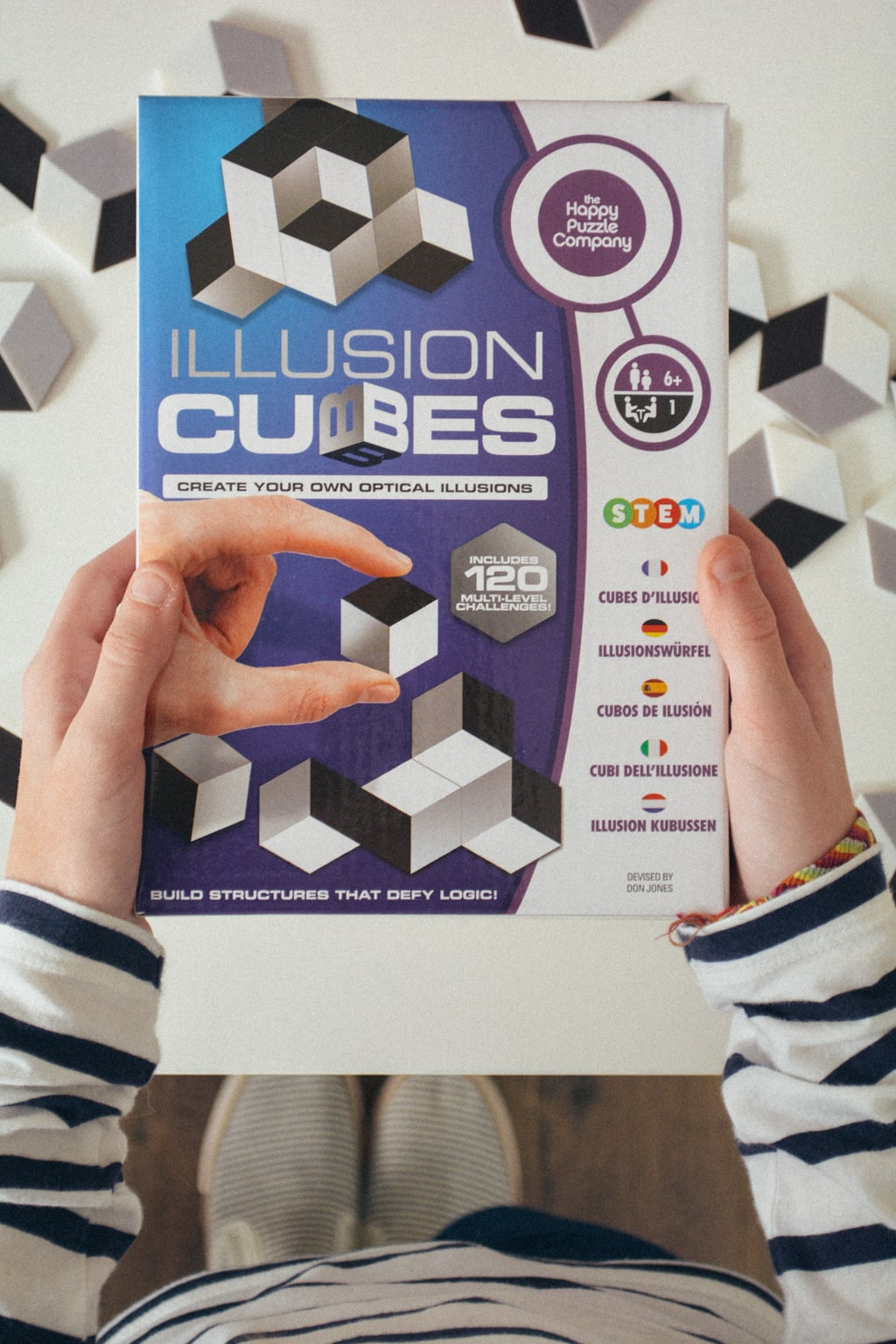
Based on the images on the box, we had incorrectly assumed gameplay was all done with flat cardboard, so we were very pleased to see such high-quality hard plastic tiles, which the manufacturer calls “cubes” due to the illusion they create.
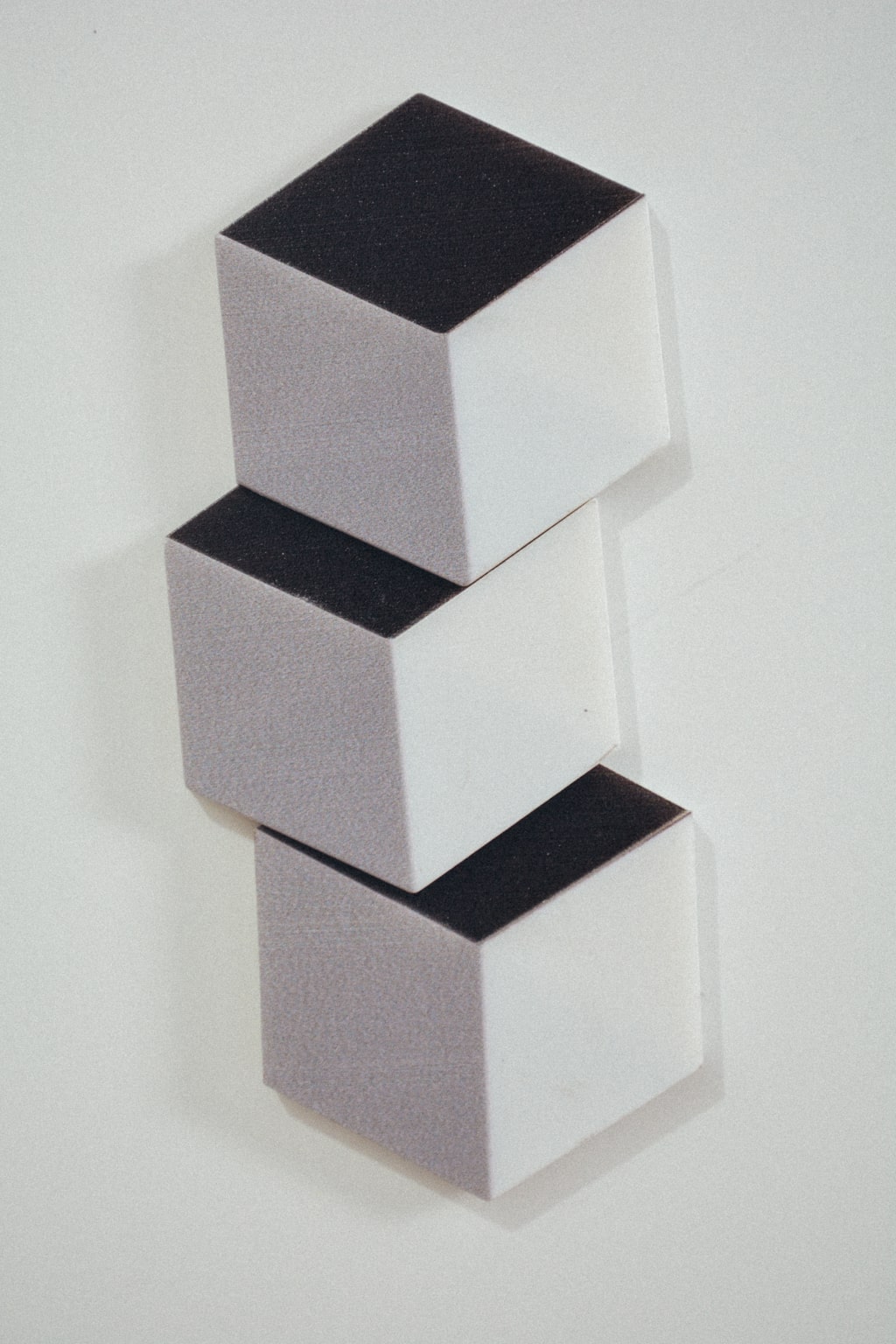
Illusion Cubes contains
- 24 hard plastic tiles/cubes, and
- a booklet of 120 challenges.




The 120 challenges are broken down into 8 levels of increasing difficulty. As the booklet explains,
- Level 1 uses 3-4 cubes
- Level 2 uses 5-6 cubes
- Level 3 uses 7-9 cubes
- Level 4 uses 10-12 cubes
- Level 5 uses 12-15 cubes
- Level 6 uses 16-18 cubes,
- Level 7 uses 19-21 cubes, and
- Level 8 uses 22-24 cubes.
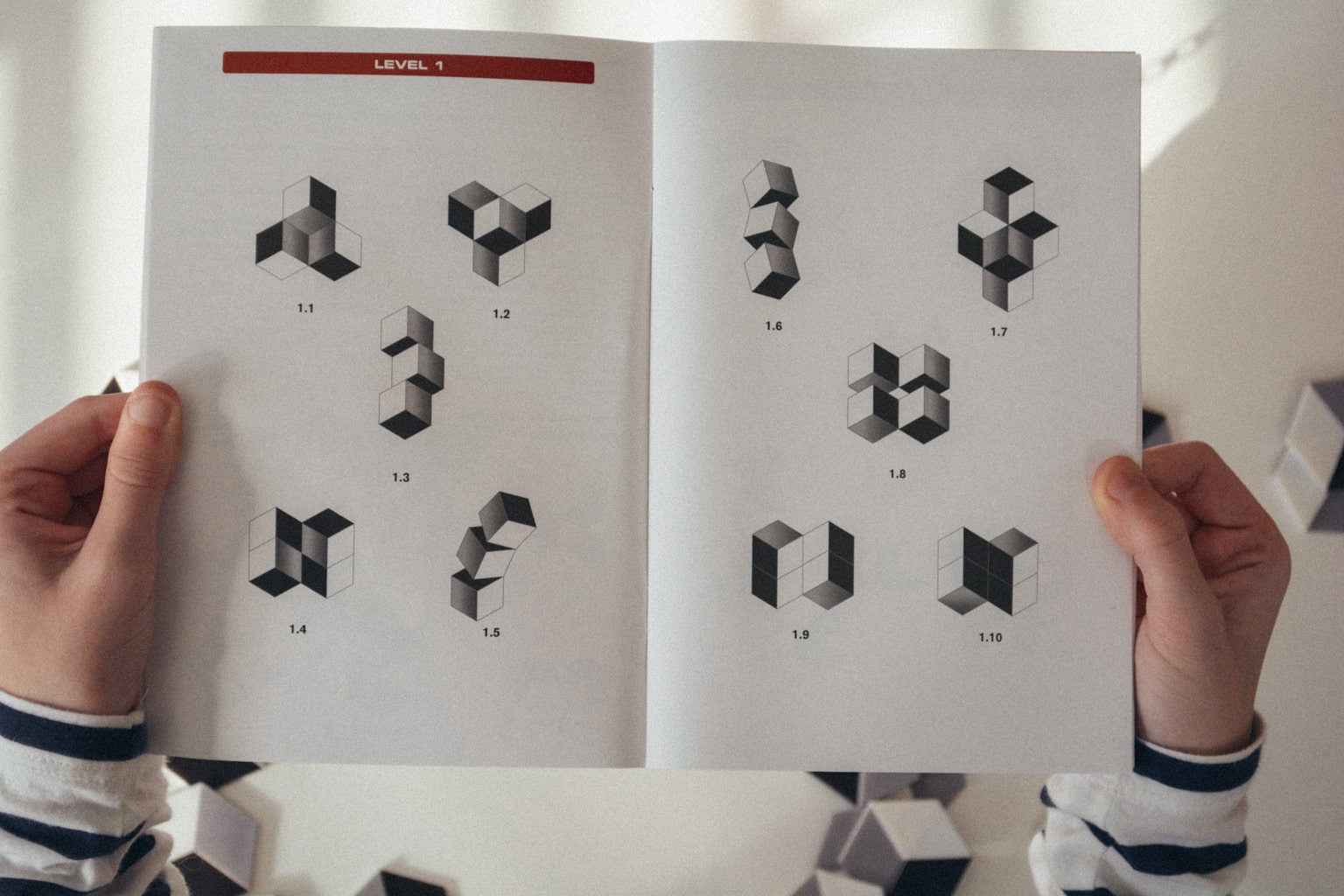
How do you play Illusion Cubes?
Unlike other single-player logic games which show you a partially completed puzzle and ask you to solve the remaining portion, Illusion Cubes actually shows you an image of the entire completed puzzle. This makes the challenges seem almost deceptively easy — until you begin!

The first few puzzles aren’t too hard, but if you’re like us, you’ll quickly find yourself puzzling until your puzzler is sore, to misquote Dr. Suess. In the world of logic games, that’s a good thing!

A few rules guide gameplay: even though you’re allowed to place tiles point to edge, you aren’t permitted to leave gaps or spaces between them. And you can’t layer tiles in such a way that they’re sitting on top of each other or at an angle, rather than nestled into the offset section. Other than that, you’re free to place the cubes however you wish to match the pictured challenge image.
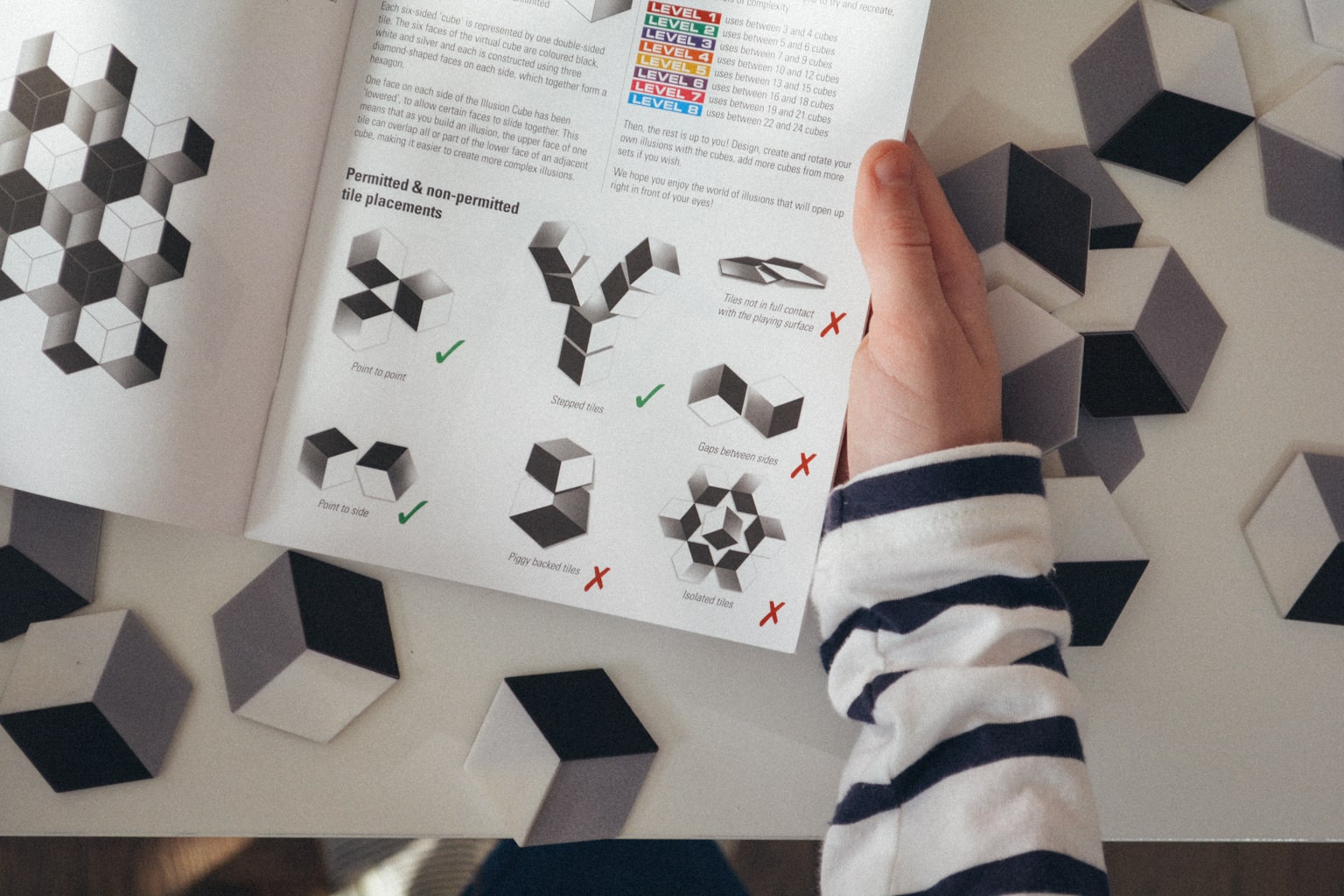
I also like how visually attractive it is. From an aesthetic perspective, the monochromatic theme really adds a lot to the Escher-like feel, which is fun.
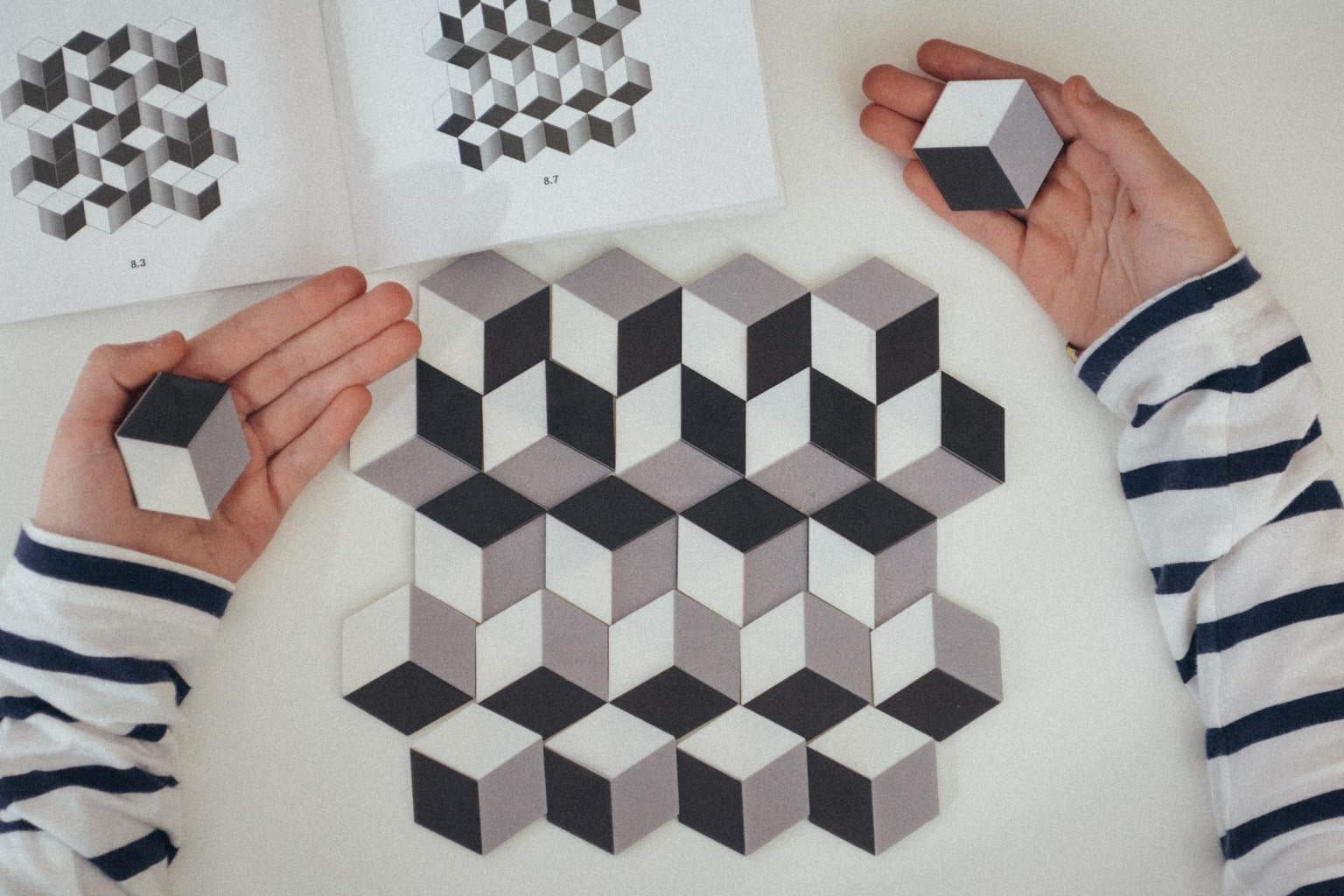
Illusion Cubes is especially appealing to artistic, math-minded, or twice-exceptional kids.
The process of solving Illusion Cubes requires spatial reasoning and thinking in more than just the two-dimensional plane, which makes it a great hands-on curriculum supplement. And if you have a twice-exceptional student who relaxes through brain strain (ha!), Illusion Cubes is a great option for a brain-break to switch gears and wind down. (If you know, you know.)


Aveline says, “I enjoyed how Illusion Cubes sort of bent my brain. It is fun looking at the pictures in the book and figuring out how you can recreate the scenes in real life. The challenge is great! I would recommend Illusion Cubes to people who already appreciate optical illusions.”
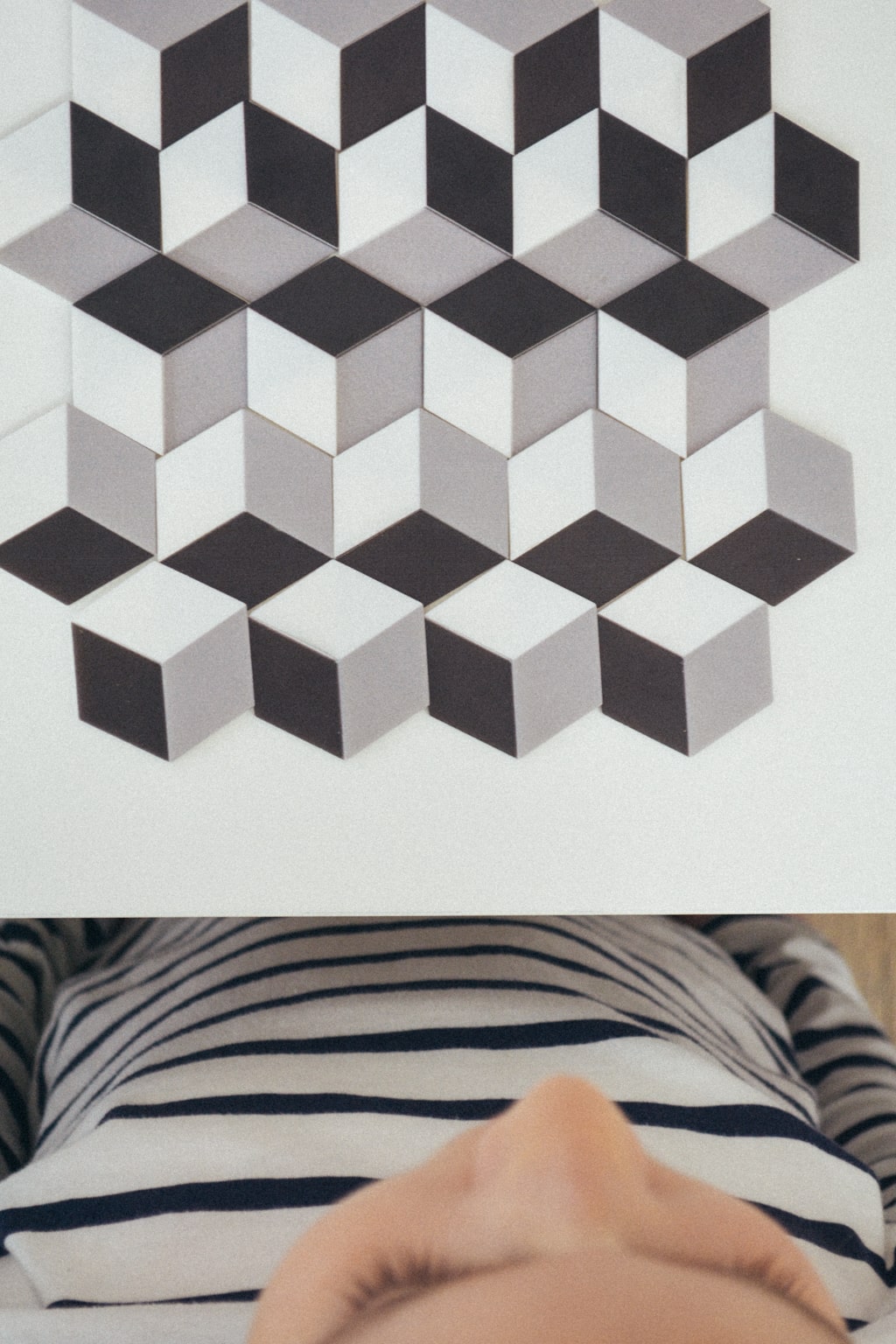
Do you incorporate games into your homeschool? Even in very bookish homes — we’re a little nerdy over here — puzzles and games are such an integral part of our day. And they’re rarely traditional strategy-based board games.
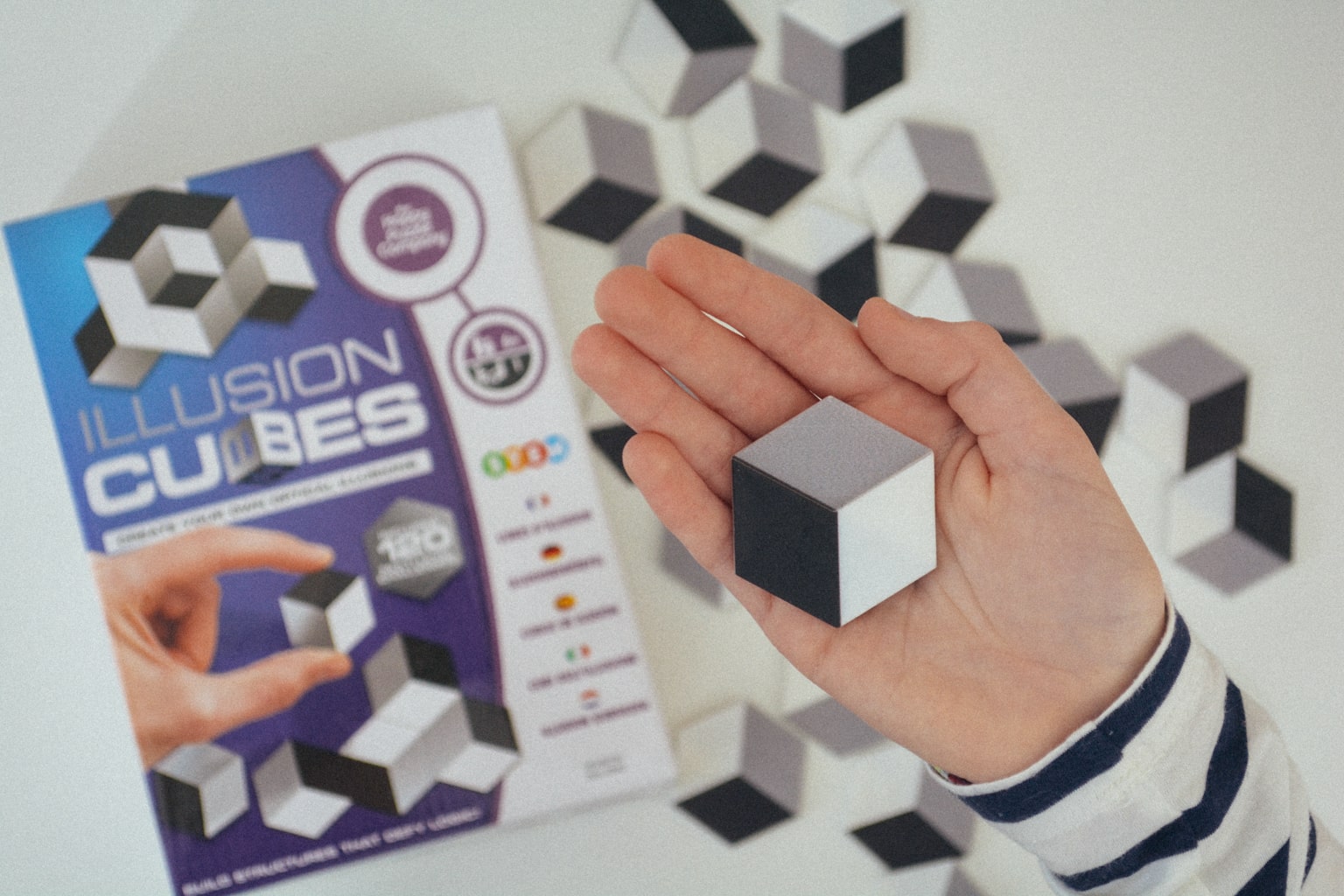


Here’s a quick round up of some hands-on fun:
- Robotis Dream 2.0 Screen-free robotics
- Fischertechnik E-tronic Screen-free robotics
- Chroma Cube Single-player logic game
- Walls & Warriors Single-player logic game
- IQ Six Pro Single-player logic game
- GraviTrax Marble run construction kit
- Great Wall of China Real brick construction kit
- Sonlight Hands-on History Historical craft kits, and more
Head over to Timberdoodle to read more about Illusion Cubes!
